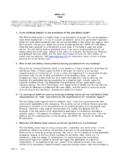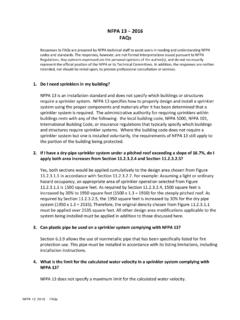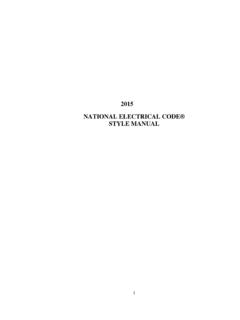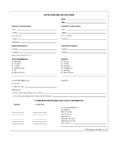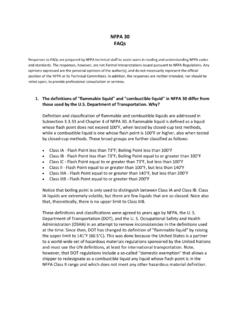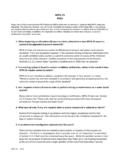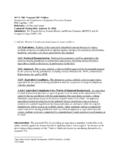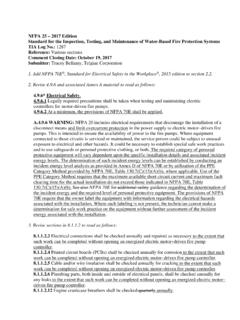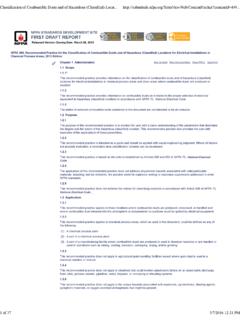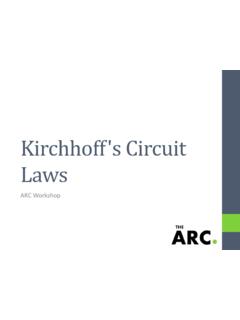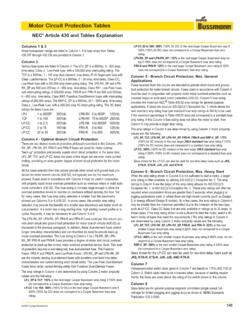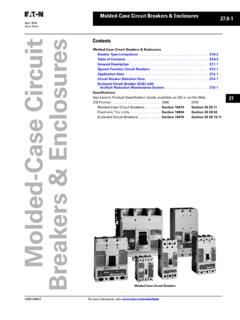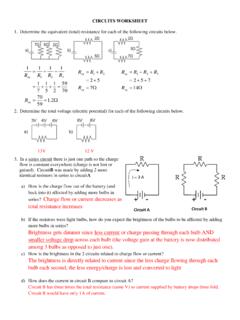Transcription of Replacement Page due to Errata - NFPA
1 1 National Electrical Code Handbook (2020) Replacement Page due to Errata Note that this page incorporates the Errata listed below. Errata Page 80, Code section (A) Replace text: (A) Dwelling Units. All 120-volt, single-phase, 15- and 20-ampere branch circuits supplying outlets or devices installed in dwelling units shall be protected by any of the means described in (A)(1) through (A)(6):With the following text: (A) Dwelling Units. All 120-volt, single-phase, 15- and 20-ampere branch circuits supplying outlets or devices installed in dwelling unit kitchens, family rooms, dining rooms, living rooms, parlors, libraries, dens, bedrooms, sunrooms, recreation rooms, closets, hallways, laundry areas, or similar rooms or areas shall be protected by any of the means described in (A)(1) through (6):February 6, Article 210 branch Circuits 2020 National Electrical Code Handbook80 The installation of a 20-ampere branch for the receptacles in each bathroom is not necessary.
2 A single circuit can supply more than one bathroom.(4) Garage branch Circuits. In addition to the number of branch circuits required by other parts of this section, at least one 120-volt, 20-ampere branch circuit shall be installed to supply receptacle outlets required by (G)(1) for attached garages and in detached garages with electric power. This circuit shall have no other : This circuit shall be permitted to supply readily accessible outdoor receptacle Arc-Fault circuit -Interrupter Protection. Arc-fault circuit -interrupter protection shall be provided as required in (A), (B), (C), and (D). The arc-fault circuit interrupter shall be installed in a readily accessible location.(A) Dwelling Units. All 120-volt, single-phase, 15- and 20-ampere branch circuits supplying outlets or devices installed in dwelling unit kitchens, family rooms, dining rooms, living rooms, parlors, libraries, dens, bedrooms, sunrooms, recre-ation rooms, closets, hallways, laundry areas, or similar rooms or areas shall be protected by any of the means described in (A)(1) through (6): (1) A listed combination-type arc-fault circuit interrupter installed to provide protection of the entire branch circuit (2) A listed branch /feeder-type AFCI installed at the origin of the branch - circuit in combination with a listed outlet branch - circuit -type arc-fault circuit interrupter installed at the first outlet box on the branch circuit .
3 The first outlet box in the branch circuit shall be marked to indicate that it is the first outlet of the circuit . (3) A listed supplemental arc protection circuit breaker installed at the origin of the branch circuit in combination with a listed outlet branch - circuit -type arc-fault circuit interrupter installed at the first outlet box on the branch circuit where all of the following conditions are met: a. The branch - circuit wiring shall be continuous from the branch - circuit overcurrent device to the outlet branch - circuit arc-fault circuit interrupter. b. The maximum length of the branch - circuit wiring from the branch - circuit overcurrent device to the first outlet shall not exceed m (50 ft) for a 14 AWG conductor or m (70 ft) for a 12 AWG conductor. c. The first outlet box in the branch circuit shall be marked to indicate that it is the first outlet of the arc-fault circuit -interrupter (AFCI) devices are evaluated in accordance with UL 1699, Standard for Arc-Fault circuit -Interrupters.
4 Testing methods create or simulate arcing conditions to determine a product s ability to detect and interrupt arcing faults. The devices are also tested to verify that arc detection is not unduly inhibited by the presence of loads and circuit characteristics that may mask the hazardous arcing condition. The devices are also evaluated to determine resistance to unwanted tripping due to the presence of arcing that occurs in control and utilization equipment under nor-mal operating conditions or to a loading condition that closely mim-ics an arcing fault, such as that found in a solid-state electronic ballast or a dimmed devices may also be capable of performing other func-tions such as overcurrent protection, ground-fault circuit interrup-tion, and surge suppression. UL 1699 currently recognizes four types of AFCIs: branch /feeder, cord, outlet circuit , and portable.
5 (See Exhibit for an example of the required marking indicating the type of AFCI protection.) AFCI devices have a maximum rating of 20 amperes and are intended for use in 120 volts ac, 60-hertz cir-cuits. Cord AFCIs can be rated up to 30 amperes. Placement of the device in the circuit must be considered when complying with Six possible configurations using listed equipment are per-mitted by the NEC. The objective of the NEC is to provide protection of the entire branch circuit . The configurations may use a single combination-type AFCI at the origin of the circuit , a combination of devices, or a combination of physical protection for part of the cir-cuit and a device-type AFCI located downstream of the origin of the circuit . Where the AFCI is not located at the origin of the circuit , a higher level of physical protection must be provided for branch - circuit conductors from the origin of the branch circuit to the device-type AFCI.
6 Some configurations have length restrictions to the first outlet, based on the size of the conductors (50 feet for 14 AWG and 70 feet for 12 AWG). Commentary Table summa-rizes the permitted methods of providing AFCI AFCI devices provide arcing protec-tion against parallel faults. An example of a parallel arcing fault is a cable stapled to a wooden stud where the staple has been driven deeply into the cable jacket, damaging the conductor insulation. Combination-type AFCIs provide parallel arcing protection as well as protection against series arcing, such as could occur in a cord A circuit breaker with the required marking indicating the type of AFCI 802/4/20 11:11 AM2/4/20 11:11 AM
